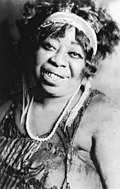
Funk is a music genre that originated in African-American communities in the mid-1960s when musicians created a rhythmic, danceable new form of music through a mixture of various music genres that were popular among African-Americans in the mid-20th century. It deemphasizes melody and chord progressions and focuses on a strong rhythmic groove of a bassline played by an electric bassist and a drum part played by a percussionist, often at slower tempos than other popular music. Funk typically consists of a complex percussive groove with rhythm instruments playing interlocking grooves that create a "hypnotic" and "danceable" feel. It uses the same richly colored extended chords found in bebop jazz, such as minor chords with added sevenths and elevenths, and dominant seventh chords with altered ninths and thirteenths.
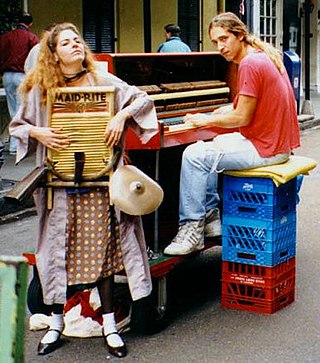
The washboard and frottoir are used as a percussion instrument, employing the ribbed metal surface of the cleaning device as a rhythm instrument. As traditionally used in jazz, zydeco, skiffle, jug band, and old-time music, the washboard remained in its wooden frame and is played primarily by tapping, but also scraping the washboard with thimbles. Often the washboard has additional traps, such as a wood block, a cowbell, and even small cymbals.
Anthony "Tuba Fats" Lacen was a jazz tubist and band leader. Tuba Fats was New Orleans' most famous tuba player and played traditional New Orleans jazz and blues for over 40 years.
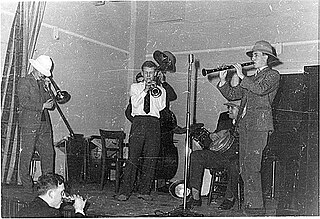
Trad jazz, short for "traditional jazz", is a form of jazz in the United States and Britain that flourished from the 1930s to 1960s, based on the earlier New Orleans Dixieland jazz style. Prominent trad jazz musicians such as Chris Barber, Freddy Randall, Acker Bilk, Kenny Ball, Ken Colyer and Monty Sunshine performed a populist repertoire which also included jazz versions of pop songs and nursery rhymes.

Kermit Ruffins is an American jazz trumpeter, singer, and composer from New Orleans. He has been influenced by Louis Armstrong and Louis Jordan and says that the highest note he can hit on trumpet is a high C. He often accompanies his songs with his own vocals. Most of his bands perform New Orleans jazz standards though he also composes many of his own pieces. Jon Pareles of The New York Times wrote, "Mr. Ruffins is an unabashed entertainer who plays trumpet with a bright, silvery tone, sings with off-the-cuff charm and never gets too abstruse in his material."

The Preservation Hall Jazz Band is a New Orleans jazz band founded in New Orleans by tuba player Allan Jaffe in the early 1960s. The band derives its name from Preservation Hall in the French Quarter. In 2005, the Hall's doors were closed for a period of time due to Hurricane Katrina, but the band continued to tour.

The Rebirth Brass Band is a New Orleans brass band. The group was founded in 1983 by Phillip "Tuba Phil" Frazier, his brother Keith Frazier, Kermit Ruffins, and classmates from Joseph S. Clark Senior High School, which closed in the spring of 2018, in the Tremé neighborhood of New Orleans. Arhoolie released its first album in 1984.

Tom McDermott is a pianist and composer born in St. Louis, Missouri in 1957. He began studying piano at age seven, became a professional musician at 16, and received a Master of Music degree from Washington University in St. Louis in 1982. Two years later he moved to New Orleans and became noted for the styles of music associated with that town, especially traditional jazz and New Orleans R&B. He was in the group Dukes of Dixieland through much of the 1990s. In 1994 he co-founded and wrote arrangements for the innovative brass band the New Orleans Nightcrawlers. He has released 17 CDs as a leader, and has received praise from The New York Times, Rolling Stone, the Los Angeles Times and other publications. Since 2001 he has devoted much time travelling to Brazil, where he has studied and recorded choro music.

Leroy Jones is a jazz trumpeter. Born in New Orleans, Louisiana, Jones began playing trumpet at the age of ten, and by the time he was 12 was leading the Fairview Baptist Church Marching Band, a group of young musicians organized by jazz guitarist and banjo player Danny Barker. When the musicians' union forced Barker to disband the group in 1974, Jones became a union musician and took over the running of the group, renamed the Hurricane Brass Band, himself. In 1975 or 1976, he left the group, touring for a time with Eddie Vinson and Della Reese before forming his own group, the Leroy Jones Quintet. In 1991, Jones joined the big band of Harry Connick, Jr., and the exposure with Connick's band, led to Jones' releasing his first album under his own name; Mo' Cream From The Crop came out on the Columbia label in 1994. The Leroy Jones Quintet continues to tour and record, and since 2004 Jones has also appeared with the Preservation Hall Jazz Band and Dr. John.

Al Cohn was an American jazz saxophonist, arranger and composer. He came to prominence in the band of clarinetist Woody Herman and was known for his longtime musical partnership with fellow saxophonist Zoot Sims.

Melvin Edward Alton "Turk" Murphy was an American trombonist and bandleader, who played traditional and Dixieland jazz.

George Sylvester "Red" Callender was an American string bass and tuba player. He is perhaps best known as a jazz musician, but worked with an array of pop, rock and vocal acts as a member of The Wrecking Crew, a group of first-call session musicians in Los Angeles. Callender also co-wrote the 1959 top-10 hit "Primrose Lane".

Gilbert John Landry, also known by the stage name of Frank Lemon, is an American singer-songwriter and guitarist born in Lake Charles, Louisiana. He is a former member of Old Crow Medicine Show and a founding member of the Kitchen Syncopators. In March 2015 he released his third album, the self-titled Gill Landry, and in October 2017 came Love Rides a Dark Horse released by ATO Records and Loose Music.
James Albert Cullum Jr., better known as Jim Cullum Jr., was an American jazz cornetist known for his contributions to Dixieland jazz. His father was Jim Cullum Sr., a clarinetist who led the Happy Jazz Band from 1962 to 1973. Jim Cullum Jr. led the Jim Cullum Jazz Band as its successor. His band mates included Evan Christopher, Allan Vaché, and John Sheridan.
Dixieland jazz, also referred to as traditional jazz, hot jazz, or simply Dixieland, is a style of jazz based on the music that developed in New Orleans at the start of the 20th century. The 1917 recordings by the Original Dixieland Jass Band, fostered awareness of this new style of music.
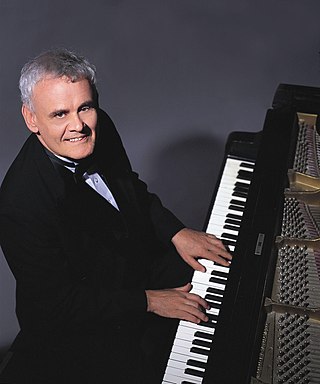
Terry Waldo is an American pianist, composer, and historian of early jazz, blues, and stride music, and is best known for his contribution to ragtime and his role in reviving interest in this form, starting in the 1970s. Says Wynton Marsalis in his introduction to Waldo's book: "He teaches Ragtime, he talks about Ragtime, he plays it, he embodies it, he lives it, and he keeps Ragtime alive." The book, This is Ragtime, published in 1976, grew out of the series of the same title that Waldo produced for NPR in 1974. Waldo is also a theatrical music director, producer, vocalist, and teacher. He is noted for his wit and humor in performance, as "a monologist in the dry, Middle Western tradition." Eubie Blake describes his first impression of Waldo's performance thus: "I died laughing...that's one of the hardest things to do—make people laugh. Terry's ability to do this, combined with his musicianship, actually reminds me of Fats Waller."

Norbert Susemihl is a German trumpeter, drummer, singer, and bandleader. He is a promoter of New Orleans Jazz and New Orleans Music.

Luke Winslow-King Balzuweit is an American guitarist, multi-instrumentalist, singer, composer, and lyricist based out of [Calatayud, Aragón], Spain, who plays vintage blues and jazz music and is known for his slide guitar work. He is a music traditionalist, playing a mixture of "people's music" and improvisational jazz based in collective improvisation, with influences from New Orleans, where he was based for 15 years, that includes jazz, Delta blues, ragtime, pre-war American folk, with influences from diverse sources like Béla Bartók and Antonín Dvořák's String Quartet No. 12 and Woody Guthrie.
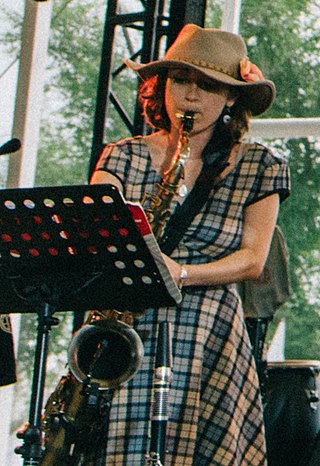
Chloe Feoranzo is an American clarinetist, saxophonist, and vocalist who has been performing professionally since the age of 15. Born in Rhode Island, she grew up in San Diego, where she played in youth orchestras and pit bands, along with swing and dixieland bands and playing as a guest artist at numerous festivals across Southern California. She made her debut at the Mission Valley music fete in 2005. As a teenage musician she studied with jazz sax legend Charles McPherson and attended the annual UC San Diego Jazz Camp. In 2007, she became the San Diego Jazz Fest & Swing Extravaganza's first youth guest artist.
Joseph Mark Cohn is an American jazz guitarist.








